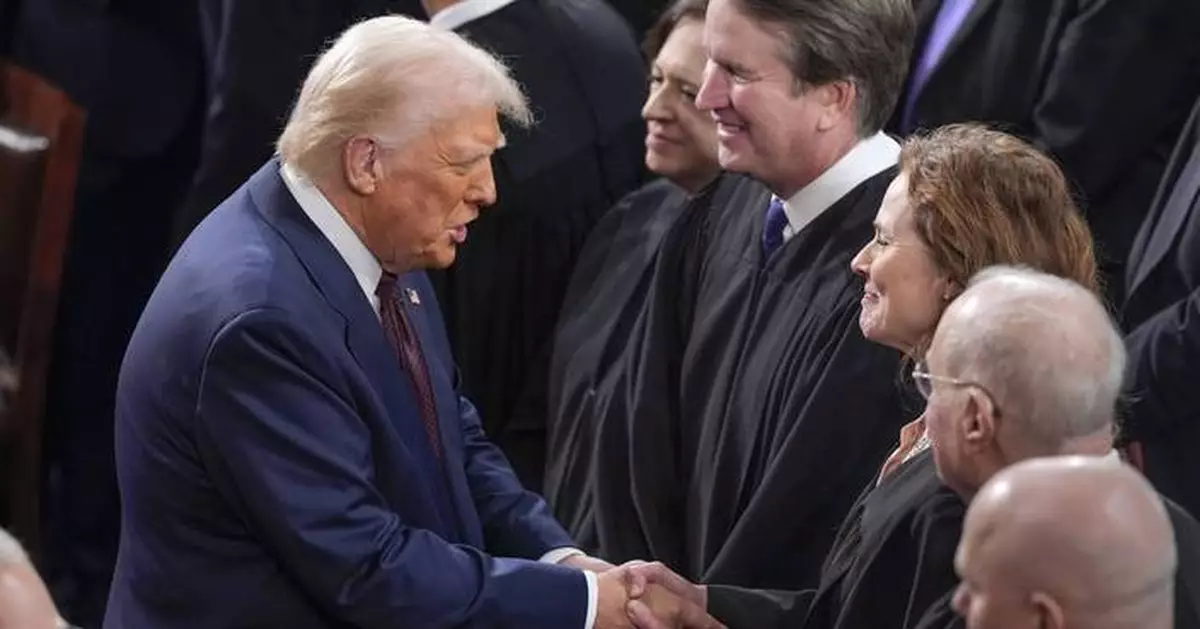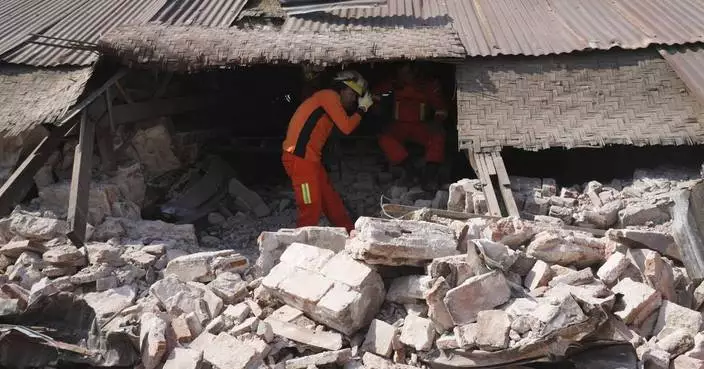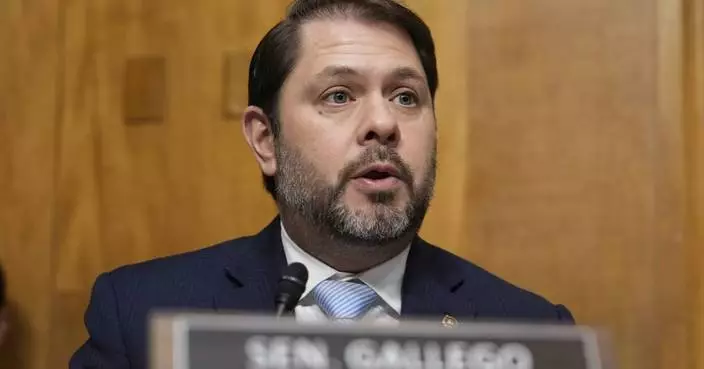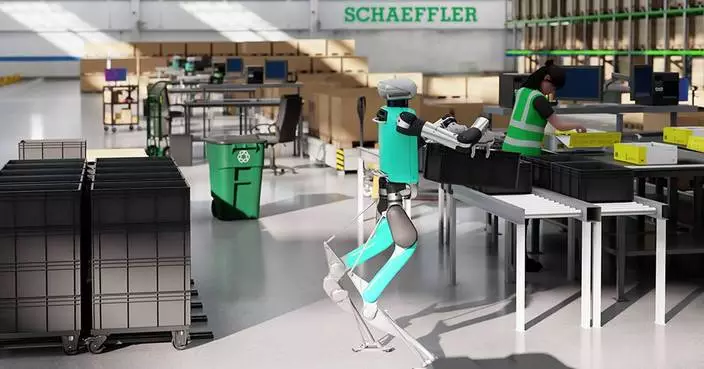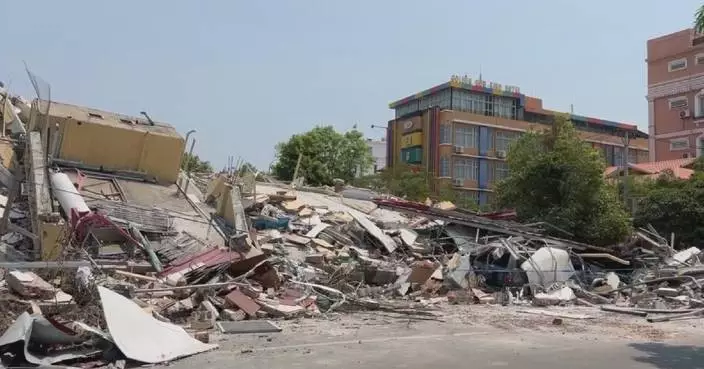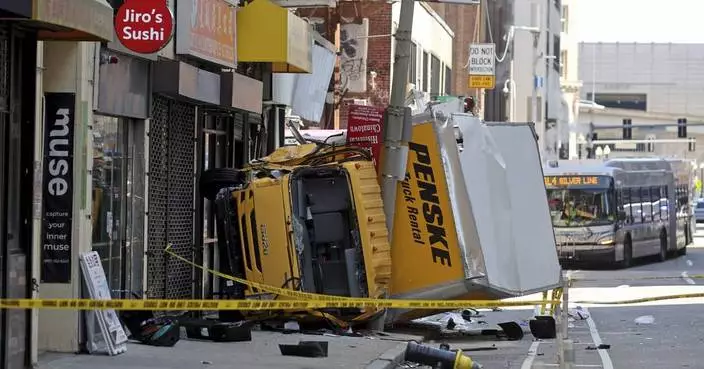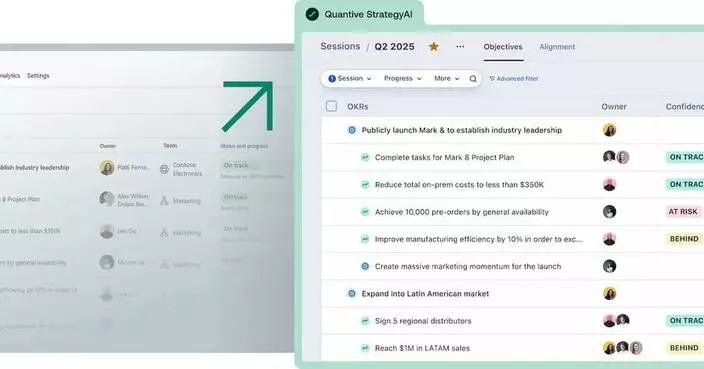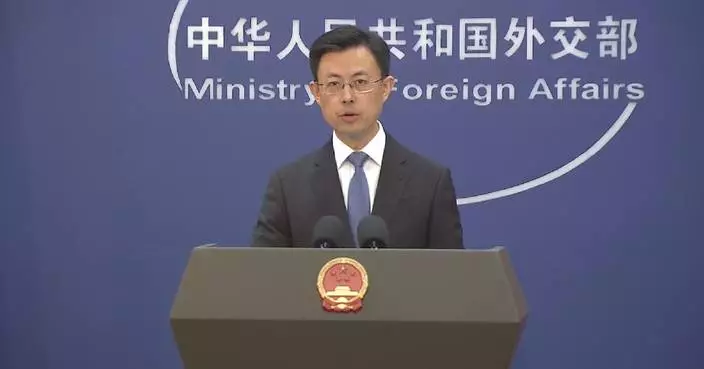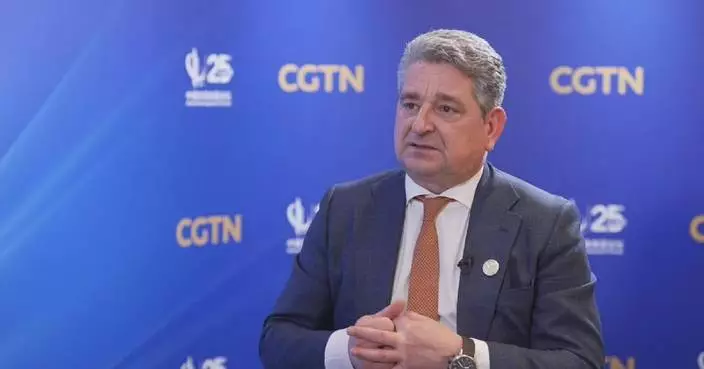WASHINGTON (AP) — As losses mount in lower federal courts, President Donald Trump has returned to a tactic that he employed at the Supreme Court with remarkable success in his first term.
Three times in the past week, and six since Trump took office a little more than two months ago, the Justice Department has asked the conservative-majority high court to step into cases much earlier than usual.
The administration’s use of the emergency appeals, or shadow docket, comes as it faces more than 130 lawsuits over the Republican president’s flurry of executive orders. Many of the lawsuits have been filed in liberal-leaning parts of the country as the court system becomes ground zero for pushback to his policies.
Federal judges have ruled against the administration more than 40 times, issuing temporary restraining orders and preliminary injunctions, the Justice Department said Friday in a Supreme Court filing. The issues include birthright citizenship changes, federal spending, transgender rights and deportations under a rarely used 18th-century law.
The administration is increasingly asking the Supreme Court, which Trump helped shape by nominating three justices, to step in, not only to rule in its favor but also to send a message to federal judges, who Trump and his allies claim are overstepping their authority.
“Only this Court can stop rule-by-TRO from further upending the separation of powers — the sooner, the better,” acting Solicitor General Sarah Harris wrote Friday in the deportations case, referring to the temporary restraining orders.
Stephen Vladeck, the Georgetown University law professor who chronicled the rise of emergency appeals in his book, “The Shadow Docket,” wrote on the Substack platform that "these cases, especially together, reflect the inevitable reckoning — just how much is the Supreme Court going to stand up to Trump?”
In the first Trump administration, the Justice Department made emergency appeals to the Supreme Court 41 times and won all or part of what it wanted in 28 cases, Vladeck found.
Before that, the Obama and George W. Bush administrations asked the court for emergency relief in just eight cases over 16 years.
Supreme Court cases generally unfold over many months. Emergency action more often occurs over weeks, or even a few days, with truncated briefing and decisions that are usually issued without the elaborate legal reasoning that typically accompanies high court rulings.
So far this year, the justices have effectively sidestepped the administration's requests. But that could get harder as the number of appeals increase, including in high-profile deportation cases where an extraordinary call from the president to impeach a judge prompted a rare rebuke from Chief Justice John Roberts.
Here's a look at the appeals on the court's emergency docket:
Immigration and the promise of mass deportations were at the center of Trump's winning presidential campaign, and earlier this month, he took the rare step of invoking an 18th-century wartime law to speed deportations of Venezuelan migrants accused of belonging to the Tren de Aragua gang.
Lawyers for the migrants, several of whom say they are not gang members, sued to block the deportations without due process.
U.S. District Judge James E. Boasberg, the chief judge at the federal courthouse in Washington, agreed. He ordered deportation flights to be temporarily halted and planes already making their way to a prison in El Salvador be turned around.
Two planes still landed, and a court fight over whether the administration defied his order continued to play out even as the administration unsuccessfully asked the appeals court in the nation's capital to lift his order.
In an appeal to the Supreme Court filed Friday, the Justice Department argued that the deportations should be allowed to resume and that the migrants should make their case in a federal court in Texas, where they are being detained.
Thousands of federal workers have been let go as the Trump administration seeks to dramatically downsize the federal government.
The firings of probationary workers, who usually have less time on the job and fewer protections, have drawn multiple lawsuits.
Two judges have found the administration broke federal laws in its handling of the layoffs and ordered workers reinstated. The government went to the Supreme Court after a California-based judge said some 16,000 workers must be restored to their positions.
The judge said it appeared the administration had lied in its reasons for firing the workers. The administration said he overstepped his authority by trying to force hiring and firing decisions on the executive branch.
Trump has moved quickly to try and root out diversity, equity and inclusion programs across the government and in education.
Eight Democratic-led states argued in a lawsuit that the push was at the root of a decision to cut hundreds of millions of dollars for teacher training.
A federal judge in Boston has temporarily blocked the cuts, finding they were already affecting training programs aimed at addressing a nationwide teacher shortage. After an appeals court kept that order in place, the Justice Department went to the Supreme Court.
The administration argues that judges can't force it to keep paying out money that it has decided to cancel.
On Inauguration Day, Trump signed an executive order that, going forward, would deny citizenship to babies born to parents in the country illegally.
The order restricting the right enshrined in the Constitution was quickly blocked nationwide. Three appeals court also rejected pleas to let it go into effect while lawsuits play out.
The Justice Department didn't appeal to the Supreme Court to overturn those rulings right away, but instead asked the justices to narrow the court orders to only the people who filed the lawsuits.
The government argued that individual judges lack the power to give nationwide effect to their rulings, touching on a legal issue that's concerned some justices before.
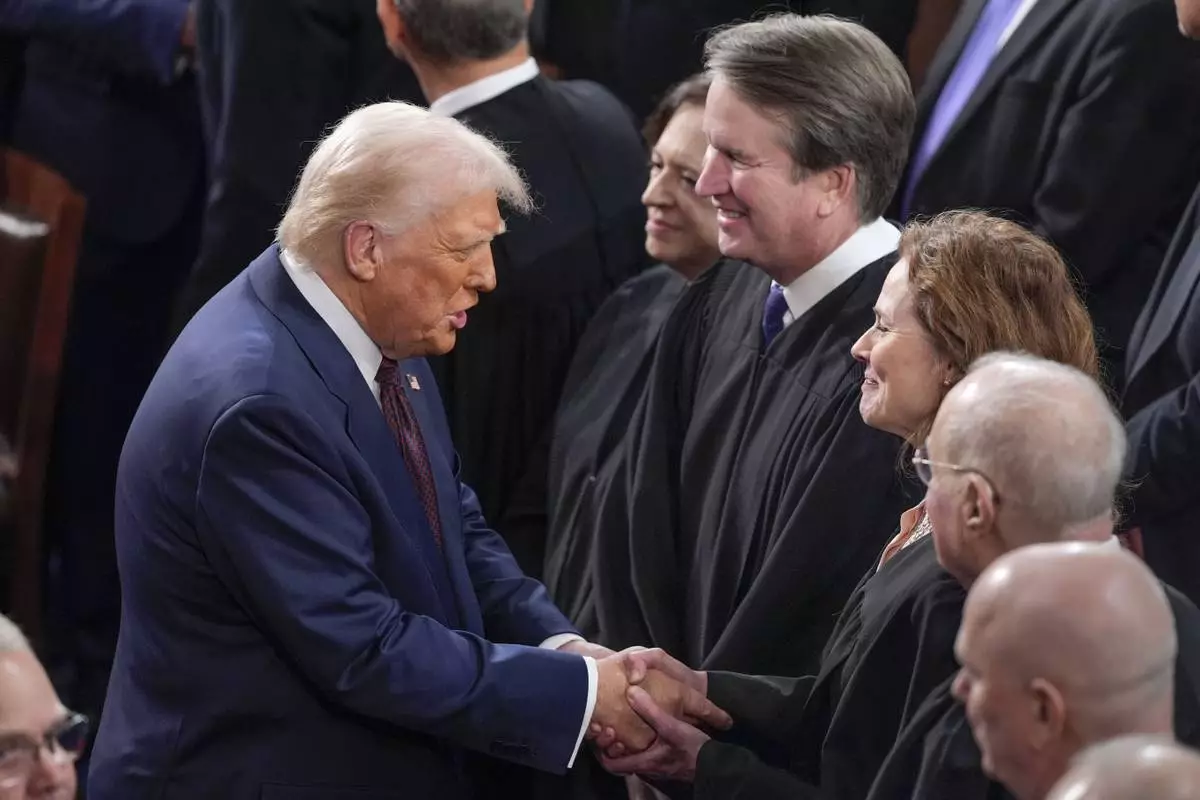
FILE - President Donald Trump, left, greets justices of the Supreme Court, from left, Elena Kagan, Brett Kavanaugh and Amy Coney Barrett, before addressing a joint session of Congress at the Capitol in Washington, March 4, 2025. (AP Photo/J. Scott Applewhite, File)
Employees across the massive U.S. Health and Human Services Department began receiving notices of dismissal Tuesday in an overhaul ultimately expected to lay off up to 10,000 people. The notices came just days after President Donald Trump moved to strip workers of their collective bargaining rights at HHS and other agencies throughout the government.
At the National Institutes of Health, the world's leading health and medical agency, the layoffs occurred as its new director, Dr. Jay Bhattacharya, began his first day of work.
Health Secretary Robert F. Kennedy Jr. announced a plan last week to remake the department, which, through its agencies, is responsible for tracking health trends and disease outbreaks, conducting and funding medical research, and monitoring the safety of food and medicine, as well as for administering health insurance programs for nearly half the country.
The plan would consolidate agencies that oversee billions of dollars for addiction services and community health centers under a new office called the Administration for a Healthy America.
The layoffs are expected to shrink HHS to 62,000 positions, lopping off nearly a quarter of its staff — 10,000 jobs through layoffs and another 10,000 workers who took early retirement and voluntary separation offers. Many of the jobs are based in the Washington area, but also in Atlanta, where the U.S. Centers for Disease Control and Prevention is based, and in smaller offices throughout the country.
Two lines with hundreds of employees wrapped around the HHS headquarters building Tuesday morning. Workers waited in the chilly spring weather to be individually scanned in for access to the building. Some said they were waiting to find out if they still had jobs. Others gathered at local coffee shops and lunch spots after being turned away, finding out they had been eliminated after decades of service.
One wondered aloud if it was a cruel April Fools' Day joke.
At the NIH, the cuts included at least four directors of the NIH’s 27 institutes and centers who were put on administrative leave, and nearly entire communications staffs were terminated, according to an agency senior leader, speaking on the condition of anonymity to avoid retribution.
An email viewed by The Associated Press shows some senior-level employees of the Bethesda, Maryland, campus who were placed on leave were offered a possible transfer to the Indian Health Service in locations including Alaska and given until the end of Wednesday to respond.
At the Food and Drug Administration, dozens of staffers who regulate drugs and tobacco products received notices, including the entire office responsible for drafting new regulations for electronic cigarettes and other tobacco products. The notices came as the FDA’s tobacco chief was removed from his position. Elsewhere at the agency, more than a dozen press officers and communications supervisors were notified that their jobs would be eliminated.
“The FDA as we’ve known it is finished, with most of the leaders with institutional knowledge and a deep understanding of product development and safety no longer employed," said former FDA Commissioner Robert Califf in an online post. Califf stepped down at the end of the Biden administration.
Democratic Sen. Patty Murray of Washington predicted the cuts will have ramifications when natural disasters strike or infectious diseases, like the ongoing measles outbreak, spread.
“They may as well be renaming it the Department of Disease because their plan is putting lives in serious jeopardy,” Murray said Friday.
The CDC has not provided a breakdown of cuts, but employees in different parts of the organization described to the AP extensive layoffs in programs that track asthma, air pollution, smoking, gun violence, reproductive health, climate change and other health threats.
The intent seems to be to create “a much smaller, infectious disease agency,” but it is destroying a wide array of work and collaborations that have enabled local and national governments to be able to prevent deaths and respond to emergencies, said Dr. Georges Benjamin, executive director of the American Public Health Association.
Among the hardest-hit centers was the CDC’s National Institute for Occupational Safety and Health, with more than 1,000 employees. NIOSH is based in Cincinnati but also has people in Pittsburgh; Spokane, Washington; and Morgantown, West Virginia.
Cuts were less drastic at the Centers for Medicare and Medicaid Services, where the Trump administration wants to avoid the appearance of debilitating the health insurance programs that cover roughly half of Americans, many of them poor, disabled and elderly.
But the impact will still be felt, with the department slashing much of the workforce at the Office of Minority Health, which no longer has a functioning webpage.
Jeffrey Grant, a former CMS deputy director, said the office is not part of a diversity, equity and inclusion program, the kind Trump's Republican administration has sought to end.
“This is not a DEI initiative. This is meeting people where they are and meeting their specific health needs,” said Grant, who resigned last month and now helps place laid-off CMS employees into new jobs.
The Office of Program Operations & Local Engagement, which does local outreach for CMS operations, was also gutted, Grant said.
Beyond layoffs at federal health agencies, cuts are beginning at state and local health departments as a result of an HHS move last week to pull back more than $11 billion in COVID-19-related money. Some health departments have identified hundreds of jobs that stand to be eliminated, “some of them overnight, some of them are already gone,” said Lori Tremmel Freeman, chief executive of the National Association of County and City Health Officials.
A coalition of state attorneys general sued the Trump administration on Tuesday, arguing the cuts are illegal, would reverse progress on the opioid crisis and would throw mental health systems into chaos.
Kennedy criticized the department he oversees as an inefficient “sprawling bureaucracy” in a video Thursday announcing the restructuring. He said the department’s $1.7 trillion yearly budget “has failed to improve the health of Americans.”
“I want to promise you now that we’re going to do more with less,” Kennedy said.
The department on Thursday provided a breakdown of some of the cuts.
__ 3,500 jobs at the FDA, which inspects and sets safety standards for medications, medical devices and foods.
__ 2,400 jobs at the CDC, which monitors for infectious disease outbreaks and works with public health agencies nationwide.
__ 1,200 jobs at the NIH.
__ 300 jobs at the Centers for Medicare and Medicaid Services, which oversees the Affordable Care Act marketplace, Medicare and Medicaid.
The Associated Press Health and Science Department receives support from the Howard Hughes Medical Institute’s Science and Educational Media Group and the Robert Wood Johnson Foundation. The AP is solely responsible for all content.
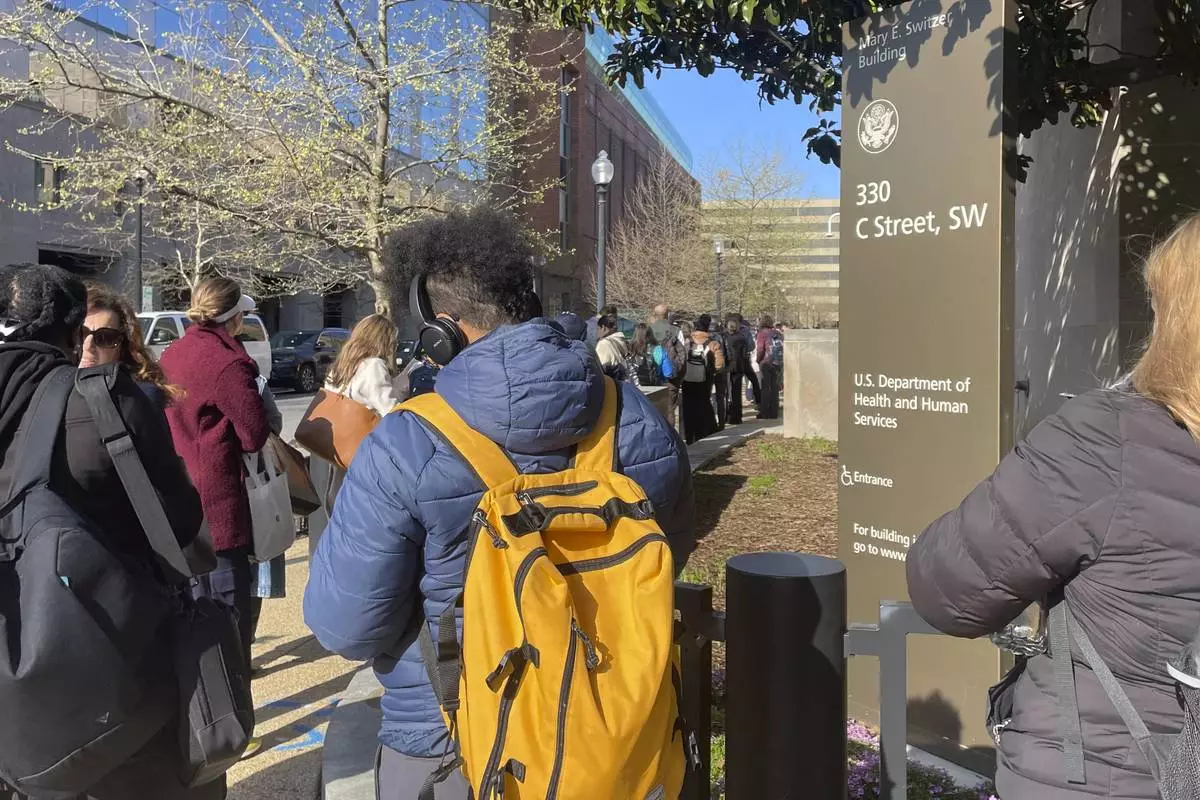
Hundreds of employees wait in line wrapped around the outside of the Health and Human Services headquarters building, Tuesday morning, April 1, 2025 in Washington. (AP Photo/Amanda Seitz)
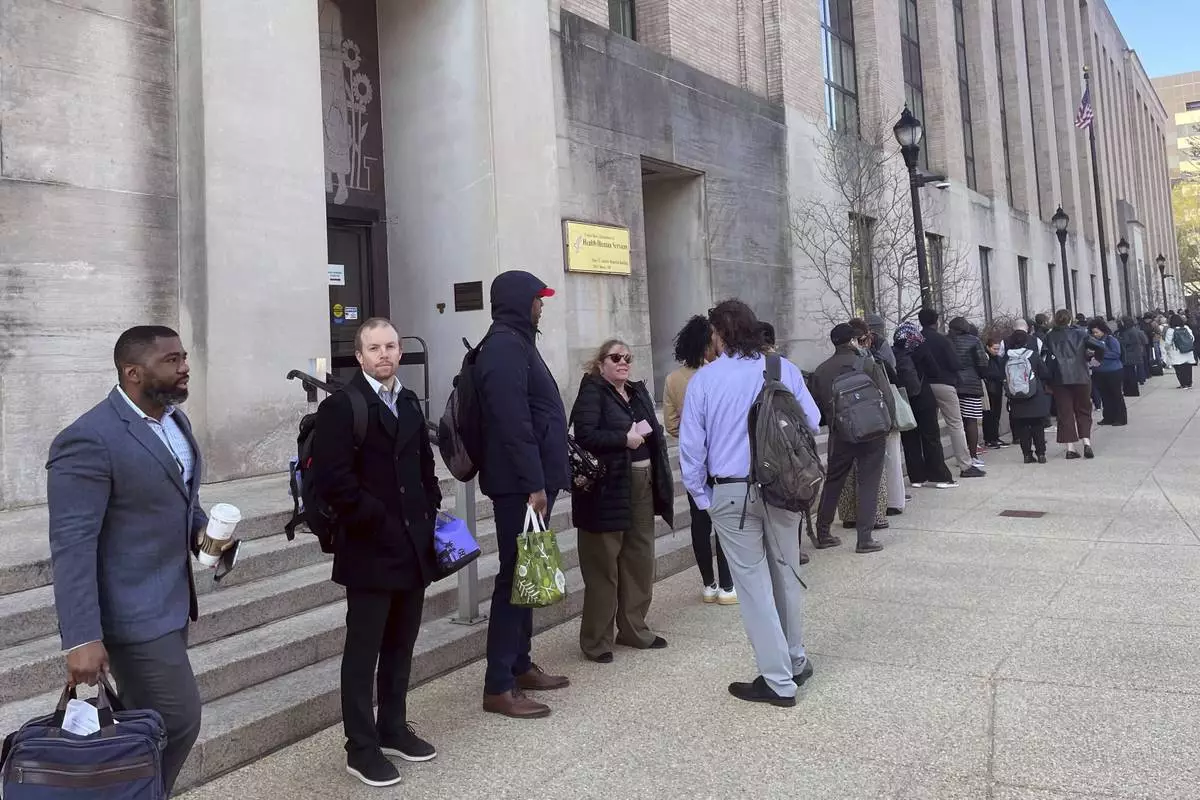
Hundreds of employees wait in line wrapped around the outside of the Health and Human Services headquarters building, Tuesday morning, April 1, 2025 in Washington. (AP Photo/Amanda Seitz)
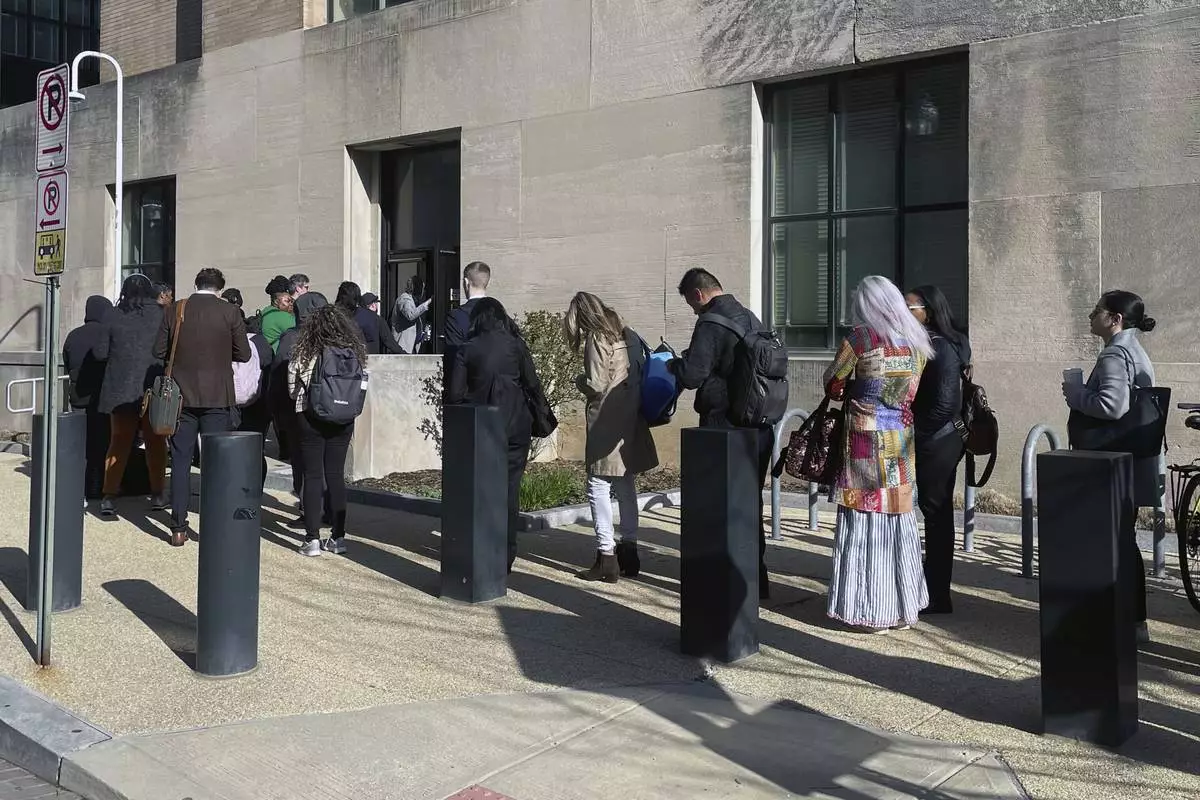
Hundreds of employees wait in line wrapped around the outside of the Health and Human Services headquarters building, Tuesday morning, April 1, 2025 in Washington. (AP Photo/Amanda Seitz)
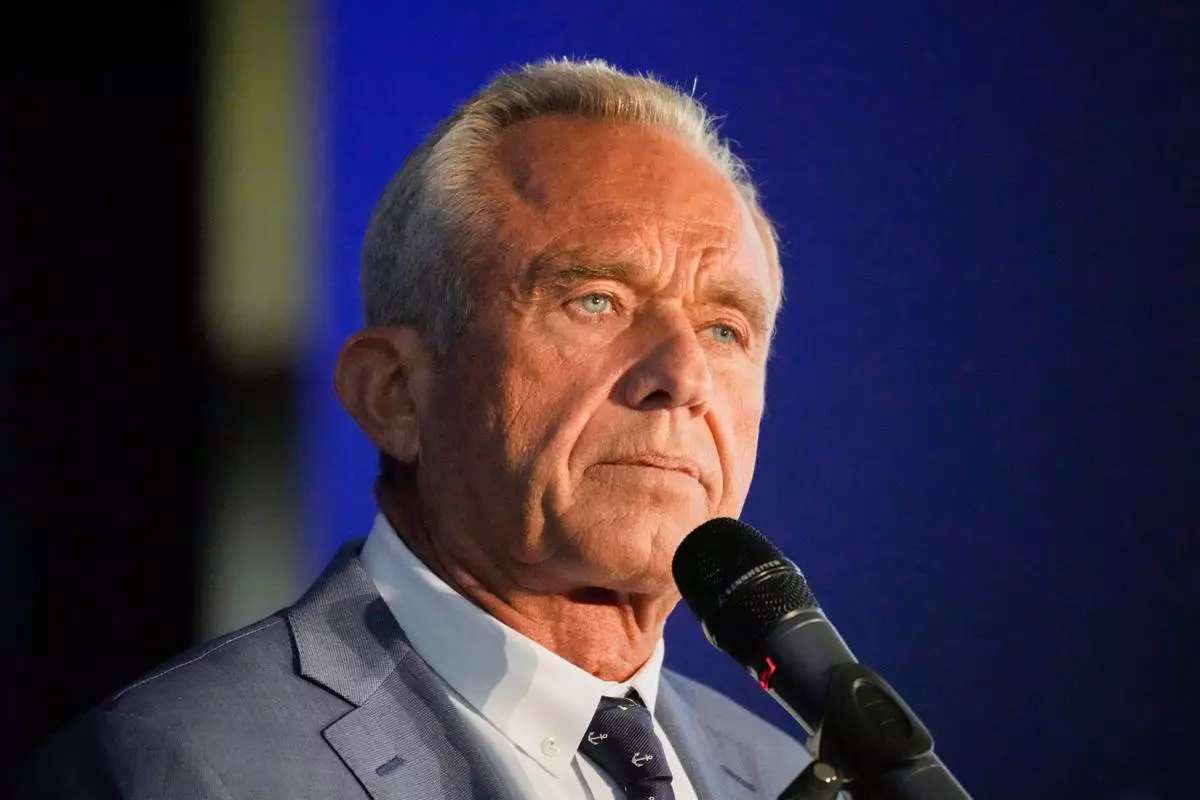
Health and Human Services Secretary Robert F. Kennedy Jr. speaks during an event announcing proposed changes to SNAP and food dye legislation, Friday, March 28, 2025, in Martinsburg, W. Va. (AP Photo/Stephanie Scarbrough)
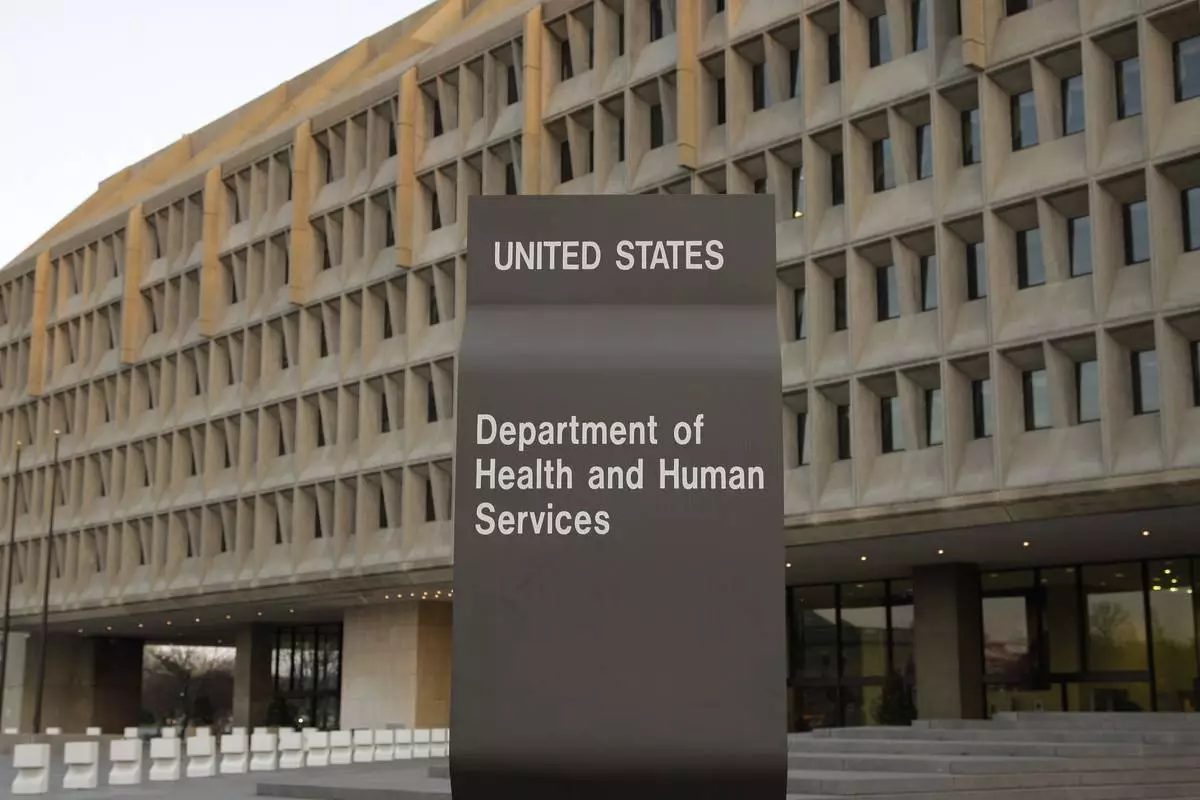
FILE - The Department of Health and Human Services building is seen in Washington, April 5, 2009.(AP Photo/Alex Brandon, File)



